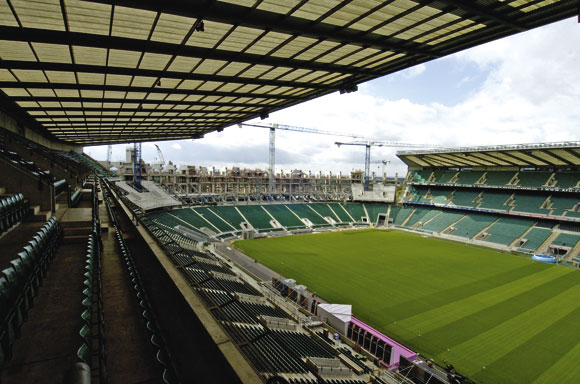50 & 20 Years Ago
An intriguing sports pavilion design
 When designing the sports pavilion and club house for a Cambridge firm the architects felt that if a sense of recreation and release were to be achieved the form should make a strong contrast with the adjacent solid rectangular buildings. This has been done by the creation of a most intriguing design.
When designing the sports pavilion and club house for a Cambridge firm the architects felt that if a sense of recreation and release were to be achieved the form should make a strong contrast with the adjacent solid rectangular buildings. This has been done by the creation of a most intriguing design.
The County Planning Department was very sympathetic and helpful in guiding the application through local opposition to its unusual appearance, which was fanned by rumours that it was a ‘rocket launching site’ and that the spire was to carry flashing neon signs. Steel was chosen for the frame because the members of the building would be more slender than if other materials were used, and also because of ease of erection and cheapness. Other factors influencing the choice of steel were its suitability to reproduce the shape of the pavilion and the fact that it provided a strong rigid frame to which the external and internal coverings could be fixed without difficulty.
 To produce the shape required by the architects a light welded frame of channels, angles and square and rectangular hollow sections was designed: the rectangular hollow sections incorporate the down pipes at the eight lower points of the roof. To facilitate production of the members of the frame the architects made a 1-in. scale plywood and polystyrene model, from which the curves were measured and set out for fabrication. The frame was erected around a temporary centre post carrying the apex unit and hoisted to the vertical position and held with guy ropes. The roof frames and the legs were then built out from the apex and the centre frame removed.
To produce the shape required by the architects a light welded frame of channels, angles and square and rectangular hollow sections was designed: the rectangular hollow sections incorporate the down pipes at the eight lower points of the roof. To facilitate production of the members of the frame the architects made a 1-in. scale plywood and polystyrene model, from which the curves were measured and set out for fabrication. The frame was erected around a temporary centre post carrying the apex unit and hoisted to the vertical position and held with guy ropes. The roof frames and the legs were then built out from the apex and the centre frame removed.
Large areas of glass provide unobstructed views across the playing fields and inside remove any feeling of restrictive enclosure. Natural materials have been used for cladding and muted colours chosen: these features, together with the planting of shrubs, the laying of paving and the reinstatement of the surrounding grass were designed so that the pavilion will merge into its rural setting.
Architects – Ellis & Gardner; Structural Engineers – Jubb and Luxton.













